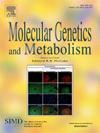Institutional readiness for novel therapeutics: A framework for multidisciplinary integration
IF 3.5
2区 生物学
Q2 ENDOCRINOLOGY & METABOLISM
引用次数: 0
Abstract
The landscape of therapeutic options for rare diseases is rapidly expanding, including a range of novel treatments such as antisense oligonucleotides, enzyme replacement therapies, targeted small molecules, mRNA, and gene replacement therapies. The integration of these high-cost, advanced therapeutics into clinical practice presents significant challenges. This focused review aims to outline the practical aspects of implementing non-gene therapy therapeutics that have been recently approved for rare diseases in a clinical setting, focusing on the multidisciplinary efforts required for successful integration, the coordination with various healthcare specialists, and the management of institutional and insurance-related barriers. Effective implementation necessitates strong institutional support and comprehensive infrastructure, including specialized clinics and dedicated pharmacy services. Key strategies involve developing new treatment protocols, ensuring robust payor support, and coordinating with pharmaceutical companies. The successful deployment of these new to market therapeutics hinges on a well-coordinated, institution-wide approach that addresses both clinical and logistical challenges. Emphasizing multi-disciplinary collaboration and patient-centric care, institutions can navigate the complexities of recently approved rare disease treatments, improving outcomes and access for this vulnerable patient population.
新疗法的机构准备:多学科整合的框架
罕见病的治疗选择正在迅速扩大,包括一系列新的治疗方法,如反义寡核苷酸、酶替代疗法、靶向小分子、mRNA和基因替代疗法。将这些高成本、先进的治疗方法整合到临床实践中提出了重大挑战。这篇重点综述的目的是概述在临床环境中实施最近被批准用于罕见病的非基因疗法的实际方面,重点是成功整合所需的多学科努力,与各种医疗保健专家的协调,以及制度和保险相关障碍的管理。有效实施需要强有力的机构支持和全面的基础设施,包括专门诊所和专门的药房服务。关键战略包括制定新的治疗方案,确保强有力的付款人支持,以及与制药公司协调。这些新疗法能否成功推向市场,取决于能否在全机构范围内采取协调良好的方法,解决临床和后勤方面的挑战。强调多学科合作和以患者为中心的护理,机构可以驾驭最近批准的罕见疾病治疗的复杂性,改善这一弱势患者群体的疗效和可及性。
本文章由计算机程序翻译,如有差异,请以英文原文为准。
求助全文
约1分钟内获得全文
求助全文
来源期刊

Molecular genetics and metabolism
生物-生化与分子生物学
CiteScore
5.90
自引率
7.90%
发文量
621
审稿时长
34 days
期刊介绍:
Molecular Genetics and Metabolism contributes to the understanding of the metabolic and molecular basis of disease. This peer reviewed journal publishes articles describing investigations that use the tools of biochemical genetics and molecular genetics for studies of normal and disease states in humans and animal models.
 求助内容:
求助内容: 应助结果提醒方式:
应助结果提醒方式:


